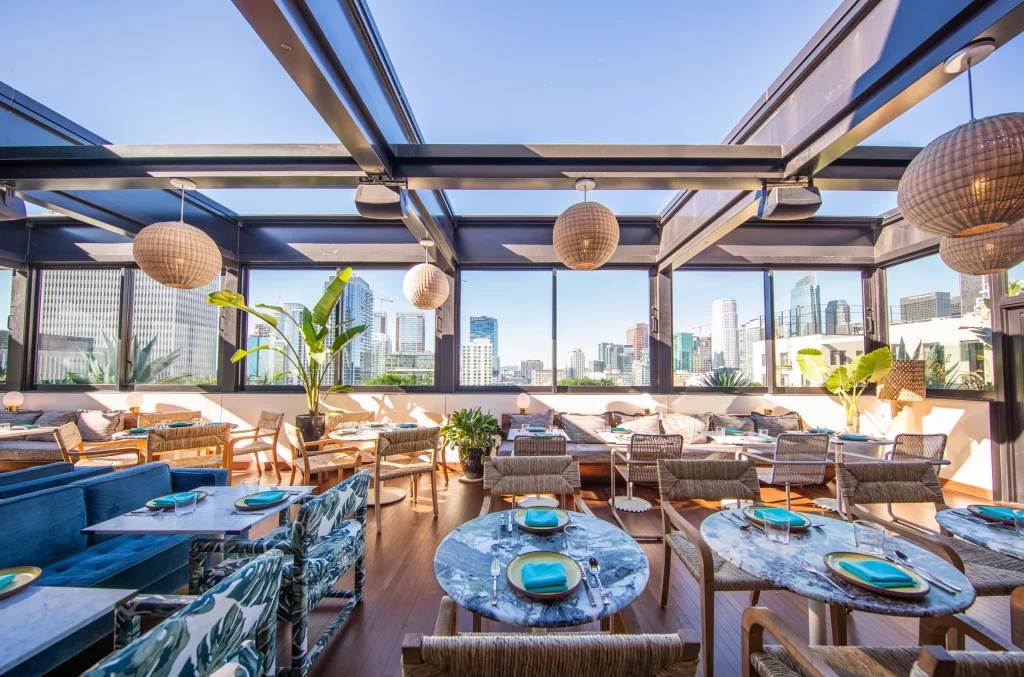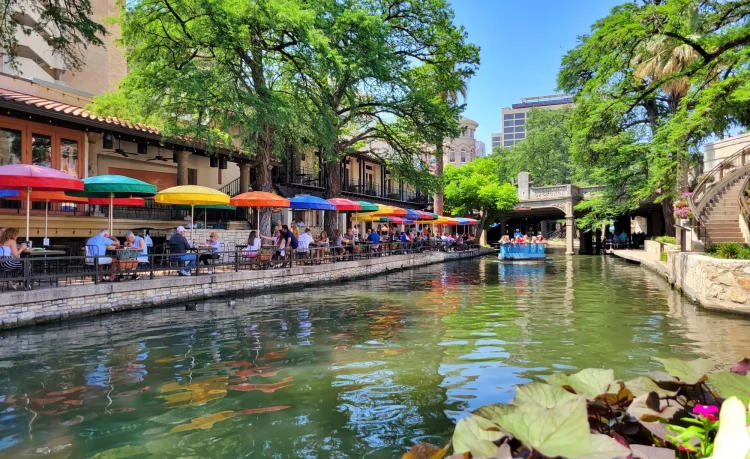As the world increasingly seeks to connect with nature, there has been a significant rise in restaurants that offer a dining experience not only rooted in exquisite cuisine but also set against some of the most awe-inspiring natural landscapes. These restaurants provide more than just a meal—they offer a sensory journey where the food is complemented by the sounds, sights, and ambiance of nature, making the dining experience unforgettable. From clifftop dining in Australia’s Blue Mountains to the immersive experiences at Noma’s future locations within nature reserves, the fusion of culinary excellence and nature is reaching new heights.
As we look ahead to 2024, dining amidst nature has become more than just a trend; it’s an essential part of how we experience food. Whether it’s perched atop a mountain or nestled in the heart of a forest, the world’s most scenic restaurant locations promise to provide diners with the perfect blend of breathtaking views and gastronomic delights. But how do these natural settings elevate the experience, and what role does sustainability and farm-to-table dining play in these exceptional eateries?
1. Overview of Restaurants Located in Breathtaking Natural Settings
The concept of dining amidst nature has existed for centuries, but in recent years, it has evolved into a more refined, immersive experience. Today, some of the most renowned restaurants are intentionally situated in locations where the landscape takes center stage. The goal is not only to serve food but to enhance the meal by surrounding the diner with the beauty of the natural world.
From remote islands in the Maldives to the rugged cliffs of Iceland, restaurants are leveraging their locations to offer patrons an unparalleled sense of place. These settings are often remote, carefully chosen for their stunning vistas, quiet solitude, or unique natural features that make them unforgettable. Whether overlooking a sweeping valley, nestled in a vineyard, or perched on the edge of a glacier, the location of these restaurants is as much a part of the experience as the food itself.
Examples of Scenic Dining Locations:
- The Clifftop Dining in Australia’s Blue Mountains: Perched high above the valley floor, offering a dramatic view of the rugged cliffs, vast forests, and distant mountains, this location gives diners the sensation of being on top of the world. The menu typically features local ingredients, with many dishes highlighting the diverse flora and fauna of the surrounding environment.
- Noma’s Future Locations in Nature Reserves: Noma, often hailed as one of the best restaurants in the world, is known for creating immersive dining experiences that honor local ecosystems and ingredients. The upcoming Noma locations—set to be situated within pristine nature reserves—promise to offer diners an even deeper connection to the natural world, from the wild ingredients harvested on-site to the scenic beauty that surrounds them.
- Ithaa Undersea Restaurant, Maldives: Located 16 feet below the surface of the Indian Ocean, this unique underwater restaurant offers panoramic views of vibrant marine life as diners enjoy a gourmet meal. The setting provides an otherworldly dining experience, where guests feel as though they are suspended within the ocean itself.
- The Treehouse Restaurant, Costa Rica: Situated amidst the canopy of a tropical rainforest, the Treehouse Restaurant offers a one-of-a-kind experience where guests dine surrounded by the sights and sounds of exotic wildlife. The experience combines rustic charm with luxurious comfort as guests enjoy local, organic dishes.
- The Grotto, Thailand: Built into a limestone cave, this restaurant in Krabi is one of the most picturesque dining spots in the world. Guests dine with the sound of the ocean waves crashing against the rocks while enjoying fresh seafood and Thai delicacies.
These destinations are more than just places to eat—they are sanctuaries of nature that invite guests to engage all their senses. The natural surroundings not only provide incredible views but also influence the ingredients used, the architecture of the restaurants, and the overall vibe.
2. Spotlight on Famous Locations Like The Clifftop Dining in Australia’s Blue Mountains and Noma’s Future Locations in Nature Reserves
Clifftop Dining in Australia’s Blue Mountains
Located just outside of Sydney, the Blue Mountains offer some of the most breathtaking views in Australia. The rugged cliffs, deep valleys, and mist-filled forests provide the perfect backdrop for an unforgettable meal. The clifftop dining experiences in the Blue Mountains are designed to make the most of the natural beauty around them, with large windows or open-air seating allowing diners to gaze out over the dramatic landscape.
Many of the restaurants in this area emphasize Australian cuisine, with dishes made from locally sourced ingredients, including native herbs, fruits, and meats. For example, a meal might feature kangaroo or wallaby meat paired with locally grown vegetables or bush foods like bush tomatoes and finger limes.
The addition of these regional ingredients to the already stunning setting creates a culinary journey that enhances the diner’s connection to the land. Whether you’re enjoying a dish on a terraced deck that overlooks a lush valley or seated inside a sleek modern restaurant with floor-to-ceiling windows, the experience is as much about appreciating nature as it is about enjoying the food.
Noma’s Future Locations in Nature Reserves
Noma, the celebrated Copenhagen-based restaurant led by chef René Redzepi, is known for its innovative approach to food that explores the boundaries between cuisine, culture, and the environment. Redzepi’s vision for Noma extends beyond the restaurant’s walls—he’s planning future locations in carefully selected nature reserves around the world.
The idea behind these new locations is to create immersive, site-specific dining experiences that blend high-level gastronomy with the natural environment. By situating Noma in nature reserves, the restaurant aims to promote the idea of sustainable eating while showcasing local, wild ingredients that would be sourced from the surrounding ecosystems.
Guests at Noma’s future locations will likely experience the restaurant’s signature tasting menus, which often incorporate foraged ingredients such as wild herbs, edible flowers, mushrooms, and seaweed. These experiences will focus on the relationship between food and nature, offering diners the chance to understand the origin of each dish and the environment that nourishes it.
By dining in these remote and protected locations, guests will have the opportunity to reconnect with the land and enjoy a deeper, more intimate understanding of the food they eat. This type of dining experience, set against the backdrop of pristine landscapes, transforms a meal into an educational journey.

3. How Scenic Views Enhance the Dining Experience
A meal served amidst breathtaking scenery is far more than a simple act of eating; it becomes an immersive experience that appeals to all the senses. The natural surroundings serve as an extension of the dining experience, enhancing not only the aesthetic but also the emotional and psychological impact of the meal.
The Role of Aesthetics:
The striking visuals of the surrounding landscape can influence how we perceive the food. Studies have shown that people tend to rate food higher when eaten in beautiful, natural settings. The stunning views stimulate the brain and create a feeling of serenity, making the meal feel more luxurious and satisfying. In essence, nature acts as the perfect complement to fine dining, elevating both the food and the experience.
Connection to the Land:
When dining in nature, there’s often a deep connection to the environment, especially if the food reflects the local ecosystem. Eating a dish made with locally sourced ingredients that are foraged from the land or harvested nearby provides a sense of place and purpose. It’s a powerful reminder of the land’s role in nurturing both people and food, creating a bond between the diner, the dish, and the location.
Sustainability and Freshness:
Restaurants that embrace nature often incorporate sustainability into their culinary practices. Many of the world’s most scenic restaurants source their ingredients from local farms or even grow them on-site. This not only supports the local economy but also reduces the carbon footprint associated with food transportation. By prioritizing fresh, seasonal, and locally grown ingredients, these restaurants help preserve the environment while offering guests the highest quality dining experience.
4. Focusing on Farm-to-Table Dining and Sustainable Gastronomy Practices
As the world becomes more conscious of its environmental impact, many of the restaurants located in nature have adopted farm-to-table practices that emphasize sustainability. By sourcing ingredients locally, these restaurants not only support sustainable agriculture but also ensure that the food is at its freshest.
Farm-to-table dining reduces the carbon footprint associated with transporting food long distances. It also promotes biodiversity and supports small-scale local farmers who employ organic or sustainable farming practices. Guests at these restaurants can enjoy meals knowing that they are supporting practices that are good for the planet.
Some notable examples include:
- The Farm at Cape Kidnappers, New Zealand: A luxury lodge and restaurant set amidst vast farmland, The Farm focuses on using produce and meats grown on its own property. Guests are encouraged to explore the farm, where they can learn about sustainable farming practices.
- Restaurant at the End of the Universe, USA: Located in the wilds of Alaska, this restaurant uses wild-caught fish, foraged berries, and meats sourced from local farms. The setting itself, deep within the Alaskan wilderness, ensures that every meal is an authentic celebration of the land.
5. Tips for Booking a Table with a View and Understanding Local Dining Customs
Dining at one of these scenic restaurants requires careful planning, especially if you want to secure a table with the best view. Here are a few tips:
- Book Early: Many of these restaurants, particularly the most sought-after locations, often require reservations months in advance. Make sure to check the restaurant’s booking policies and reserve early to ensure you get the best table.
- Understand Local Dining Customs: Different cultures have different dining etiquettes, so it’s essential to familiarize yourself with the local customs. Whether it’s tipping norms or how to behave during a multi-course tasting menu, doing a little research can
ensure you have a smooth dining experience.
- Check the Weather: Some of the most scenic restaurants are best enjoyed in clear, sunny weather, so it’s always a good idea to check the weather forecast before booking.
Conclusion
Dining in nature offers a rare and extraordinary experience where food, environment, and culture converge in perfect harmony. Whether you’re perched on a clifftop in Australia, surrounded by the wild beauty of Iceland, or immersed in the serene landscapes of a nature reserve, dining with a view transforms a meal into something much deeper than just food—it becomes an emotional connection with the land and a celebration of the natural world.
As we look ahead to 2024, the trend of dining amidst nature is set to continue, with new locations and innovative concepts offering guests an ever-expanding array of unforgettable culinary experiences. For those who seek both gastronomic excellence and breathtaking scenery, there’s no better way to indulge in both than by dining at one of the world’s most scenic restaurants.





















